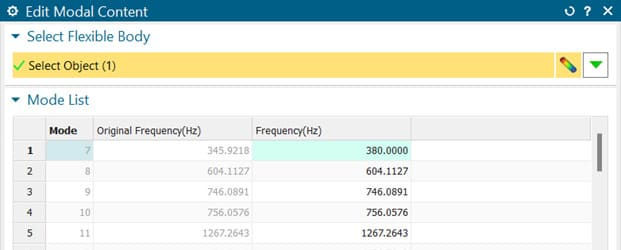Deformation modes of flexible components in mechanisms
- Alvaro Filho

- Feb 15, 2024
- 2 min read
Effects on NVH and how Simcenter 3D Motion can simulate them.

How we used to model deformation and NVH
Until now, engineers have faced the challenge of studying the effects of deformation on a system's NVH (Noise, Vibration, and Harshness) performance. They must go through a long modeling process to modify the structural model and change their vibrational behavior. This required a high degree of modeling experience, and even experienced users must go through a time-consuming iterative process of model re-meshing , resolving, and post-processing. To make matters worse, structural modifications often impact all deformation modes of a flexible component, making it difficult to dissociate it in a vibration sensitivity analysis.
Modal Edit
Now, Simcenter 3D Motion has come to solve your problems. They introduced a new feature called Modal Editing, which exposes the user to all the frequencies of a modal equivalent ERFEM-based flexible body. Each mode is represented by a simple 1-degree-of-freedom spring-mass system, and the oscillations of any modal mass are linked to the corresponding modal shape of the structure through a set of coefficients that represent the deformations measured at any node in all directions. . Performing a modal analysis on this equivalent modal model provides, by definition, precisely the same results as the original model, allowing it to be used as a parametric and editable input for a flexible body of motion.
The advantage of equivalent modal modeling
The advantage of using an equivalent modal model is that, in principle, the user can modify the frequencies and modal shapes of the flexible body just by editing the modal solver input deck file. In practice, changing deformation shapes is complex due to the many parameters involved, but editing modal frequencies is much easier. Each system in the modal model is completely decoupled from any other, allowing users to edit single modes without affecting the remaining set of modes.
Finding the dynamic motion solution
This new technology proved useful in evaluating the impact on the vibration levels of the flexible casing of an eDrive powertrain from a 10% increase in the frequency of the 1st flexion mode. By modifying the desired modal frequencies through the Mode Editing tool, a new solution was initiated to compare the vibration results obtained with the new model. The overall level of vibrations at the selected node has been reduced, especially in the speed range up to 4,000 rpm. The results from the Motion dynamic solution were then reused for further acoustic analysis of the box.




In conclusion, Simcenter 3D Motion users now have access to new functionality that allows them to edit the modal frequency content of a flexible body. Through a fully automated process, they can perform sensitivity analyzes and what-if scenarios to quickly assess how changes influence engine performance on the flexibility of any component.
Unlock the future of deformation and NVH modeling with CAEXPERTS! With Simcenter 3D Motion and the innovative Modal Editing tool, we simplify the process for engineers. Optimize your time and take your modeling to the next level with the efficiency of CAEXPERTS! Schedule a meeting now for fast and valuable transformation.


